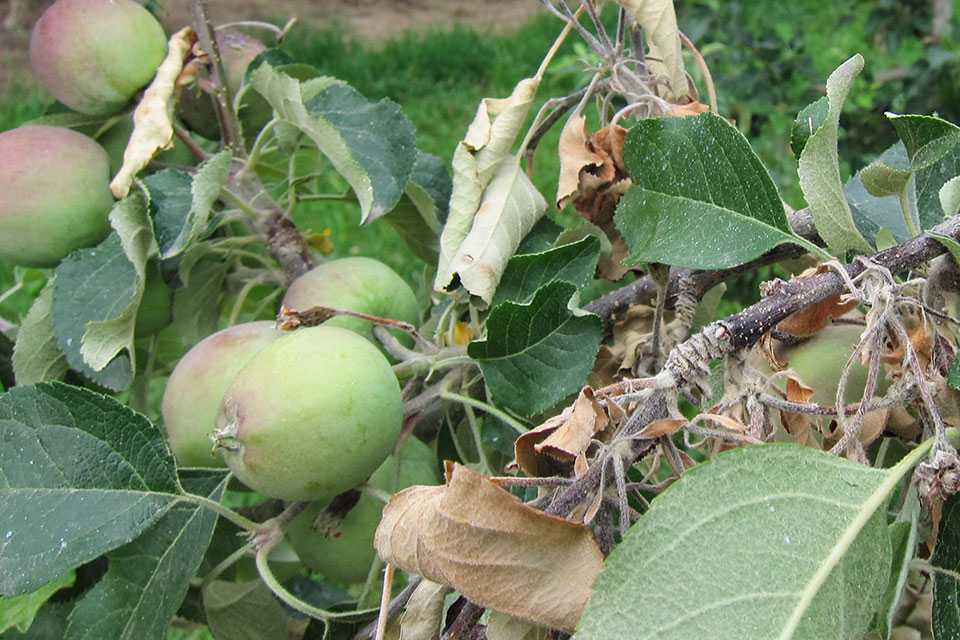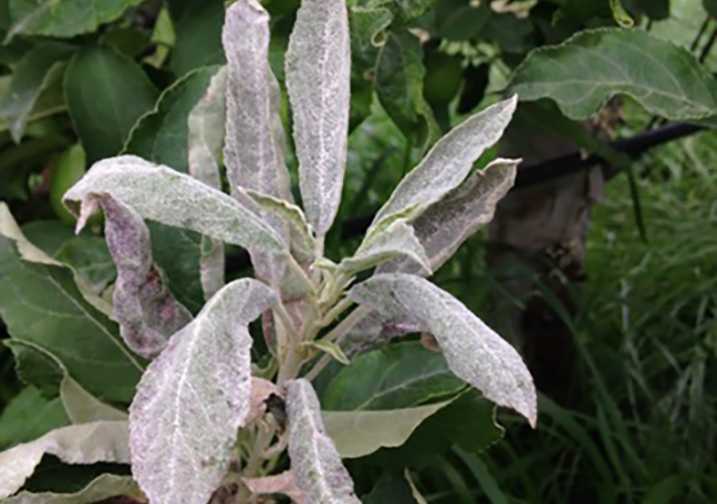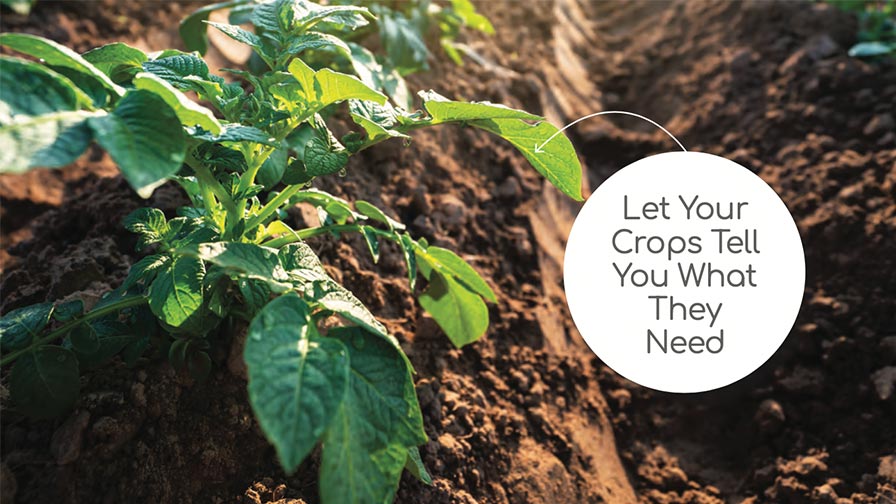The Organic Solution To Fight Fire Blight?

Organic growers fear fire blight as much as conventional growers. Fortunately, a pair of copper sprays, Previsto and Cueva, provide control comparable to conventional antibiotic treatments. Photo courtesy of Gowan
The spray application of copper at full bloom appears to be essential to the successful treatment of fire blight in the organic pome orchard, according to Oregon State University Plant Pathologist Ken Johnson.
“It’s better than anything else that we’ve done in terms of suppressing pathogen population,” Johnson said in December at the annual meeting of the Washington State Tree Fruit Association, held online for the first time.
“We start to get numbers that look more like [the antibiotic] streptomycin. We don’t know another material class that will do that. You can ask me questions about all of the other materials, but nothing works like a copper does in the organic sphere in terms of suppressing pathogen population in the flower.”
Although Johnson’s entire preferred treatment sequence against fire blight, or Erwinia amylovora, has changed little in recent years, there are always questions to be asked, he said, when it comes to the specific time between full bloom and petal fall.
“From a research perspective the question we’re often asking is what are the right materials to be using in that period and what should that sequence be?” Johnson said. “We don’t have antibiotics in organics anymore, so you have to get the most out of each of the materials that we use. There are a lot of materials out there, but we kind of go back to the same ones. And the two choices that we think are valuable are coppers and (biopesticide) Blossom Protect.”
Sequence Breakdown
Before full bloom, growers should follow through on various treatments, starting at pre-bloom. Prior to green tip, if fire blight had been present the previous year, fixed copper sanitation, at 5 to 6 pounds per acre, can help suppress the population build-up in flowers during bloom, Johnson said.
At early bloom in apple, lime sulfur sprays that are typically used to thin flowers can be applied at 20% to 70% of bloom while also taking note of their potential effect on follow-up with Blossom Protect (Aureobasidium pullulans, Westbridge), he added.
“I realize that bloom thinning with lime sulfur has gotten a lot more complicated over the years; different cultivars have different protocols,” Johnson said. “I just warn people that, when they use lime sulfur and they’re also going to use Blossom Protect, lime sulfur is very, very hard on the Blossom Protect yeast. If you’re expecting anything out of the Blossom Protect, then putting lime sulfur on top of that is probably going to negate that effect.”
The ideal time to apply Blossom Protect in apple and pear is about 80% to 90% bloom, Johnson said. Most growers have time for one full application, and if rows are alternated, they should go back and cover a second time. “If you want to get full protection out of Blossom Protect, you want to have at least one full application on the trees,” Johnson said.
Does a grower need to use Blossom Protect? “Yeah, you need to use it,” Johnson said. “It’s the best material that we have.”
From there, the call goes to the coppers — Previsto (copper hydroxide, Gowan) or Cueva (copper octanoate, Certis USA).
“If you can get them on sometime shortly after Blossom Protect, you’re going to get the most value from the material,” Johnson said, “You’re also going to put it on early enough that you’re not going to end up with fruit marking trouble as you would if you put it on later.”
At petal fall, growers can continue to get a “pretty high level of control” against E. amylovora, Johnson said, despite discontinuing copper sprays in favor of the more plant-friendly biological Serenade Opti (Bacillus subtilis, Bayer Crop Science). “We really see that as probably the way to go,” he said. “(Serenade) is not the best material for fire blight control, but it is the most fruit-safe material, and it does have value in fire blight control.”
Growers in some cases are finishing with lime sulfur (2% to 4%) to clean up bacteria, yeast, mildew, and rot fungi. “Lime sulfate, at least in red apples, doesn’t seem to be that risky in terms of fruit marking,” Johnson said.
Trial Update
An integrated control trial conducted by Oregon State University since 2016 continues to speak well of Previsto based on last year’s outcomes.
A copper-focused sequence involving Blossom Protect at 80% bloom treatment, Previsto (3 quarts per acre) at full bloom, and any one of three treatments at petal fall — Previsto, Serenade, or lime sulfur — limited E. Amylovora to 100 to 1,000 cells per flower at petal fall while increasing disease suppression to 86%.
By comparison, consecutive applications of Blossom Protect at 80% bloom and full bloom resulted in 80% disease suppression. While impressive, the population size of E. amylovora remained at more than 100,000 cells per flower at petal fall — not much different than a water-only control.
“You got 80% control from two Blossom Protect applications, though you hardly suppressed the pathogen population,” Johnson said. “Why that is, we’re not completely sure. We have some guesses.”
A Serenade-focused sequence of Blossom Protect, Serenade, and then either Serenade, Previsto, lime sulfur or Jet-Ag (hydrogen peroxide, Marrone Bio Innovations) posted between 10,000 and 100,000 pathogen cells per flower at petal fall and an average disease suppression
of 70.3%.
“The point of all of this,” Johnson concluded, “is that copper at full bloom seems to be a key in making these programs work.”
Organics Vs. Powdery Mildew
Oso (polyoxin D zinc salt, Certis USA) continues to be one of the “most promising” organic treatments against powdery mildew (PM) in Pacific Northwest apple orchards, Keith van den Broek said at the annual meeting of the Washington State Tree Fruit Association.
Applied at 6.5 fluid ounces per acre, Oso “can perform equally to many conventional fungicides under the environmental conditions of North-Central Washington,” according to van den Broek, Scientific Assistant with the Washington State University Wenatchee Tree Fruit Research and Extension Center (TFREC). He cited 2016-18 and 2018-20 trials involving ‘Granny Smith’ and ‘Jonagold’ varieties, respectively, each highly susceptible to PM.

Organic growers also have a viable option in Oso to combat powdery mildew. Photo by Lederson Gañan Betancur
Because the fungicide is alternatively labeled as a PH-D under FRAC 19, it is available to conventional and organic growers, he added.
The ‘Jonagold’ trial included two other organic treatments. Rango (neem oil, Terramera), at 160 fluid ounces per acre, provided significant reduction in PM but not as much as the standard conventional rotation, van den Broek said. When combined with the standard rotation, Rango showed less reduction of PM than either the standard rotation or Rango alone.
Cueva, at 3 quarts per acre, was the only material tested in the ‘Jonagold’ trial that did not provide any efficacy against PM, van den Broek said.
The standard organic rotation — comprised of five existing organic fungicides: Oso, Serenade Opti, Kaligreen (potassium bicarbonate, Brandt), Double Nickel (Bacillus amyloliquefaciens, Certis USA), and Green Light Neem Oil — showed efficacy in reducing PM compared to the untreated control but was not as effective as Rango, van den Broek said.
Regalia (Reynoutria sachalinensis, Marrone Bio Innovations) and Stargus (Bacillus nakamurai, Marrone Bio Innovations) had been tested on ‘Granny Smith’ in 2019. Both showed efficacy in reducing PM vs. the untreated control, but neither was as effective as the standard conventional rotation. Combining each material with the standard rotation resulted in the same efficacy as the standard rotation alone.
“Based on our results for the organic materials we’ve tested so far, Oso and Rango could be recommended for treatment of moderate to high powdery mildew pressure, especially in rotation with other organic or conventional materials with different modes of action,” van den Broek said. “Stargus and Regalia have some efficacy and could be used in rotation for low to moderate mildew pressure.”
Conventional Methods
Two new FRAC 7 fungicides, Excalia and Miravis, fared well in the TFREC trials, as did Gatten, a new U13 fungicide.
Excalia (inpyrfluxam, Valent USA) was tested at low and high application rates of 3 or 4 fluid ounces per acre and with treatment either concluded after petal fall or extended through full cover. Compared with the untreated control, it significantly reduced the incidence of PM on ‘Granny Smith’ and ‘Jonagold’, with similar efficacy to the standard rotation. Excalia also showed some possible reduction compared to the existing FRAC 7 fungicide Aprovia and seemed to perform best when applied at a lower application rate over an extended period.
Miravis (pydiflumetofen, Syngenta) also seemed to be slightly more effective than Aprovia but not as effective as Excalia or the standard conventional rotation, van den Broek said.
Gatten (flutianil, Nichino America) significantly reduced PM on ‘Granny Smith’ at high (8 fluid ounces) and low (6.4 oz.) application rates while appearing to perform better solo than in combination with or in comparison to a standard conventional rotation, van den Broek said.











